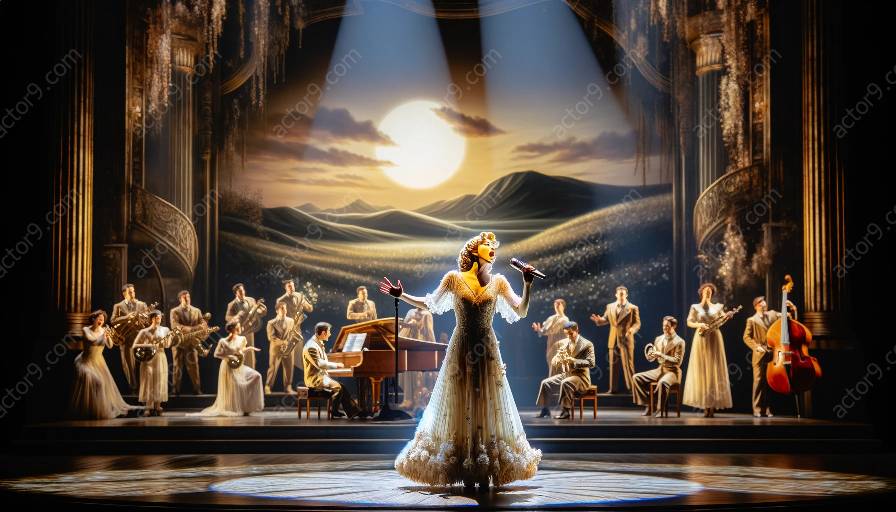When it comes to musical theatre performances, singers often face the challenge of adapting their vocal techniques to suit the character's age and personality. In this article, we will explore the intricacies of how singers can adjust their singing techniques to bring authenticity and depth to the characters they portray. This topic intertwines with the realm of musical theatre singing techniques and vocal techniques, as it requires a versatile understanding of both disciplines.
Understanding the Character's Age
One of the first considerations for adapting vocal technique in musical theatre performances is the age of the character being portrayed. A singer must understand the vocal implications of different age groups and utilize vocal techniques to reflect these differences.
Children: When portraying a young character, such as a child or teenager, a singer may need to adjust their vocal technique to emulate the higher pitch and purity associated with youthful voices. This could involve using a brighter and lighter vocal timbre, and incorporating vocal exercises to maintain a youthful sound without straining the voice.
Young Adults: Characters in their late teens or early twenties may require a different vocal approach. Singers embodying these roles may need to focus on developing a balanced vocal resonance that carries a sense of youthful energy while also demonstrating vocal control and maturity.
Middle-Aged and Elderly Characters: For characters representing older age groups, singers may need to adapt their vocal technique to convey the effects of aging on the voice. This can involve employing vocal warm-ups and exercises to maintain vocal flexibility and power, while also embracing the natural changes in vocal timbre and texture that come with age.
Aligning Vocal Technique with Personality
Personality plays a significant role in shaping a character's vocal expression in musical theatre performances. Singers need to understand the nuances of a character's personality and adjust their vocal techniques accordingly to authentically bring the character to life on stage.
Introverted Characters: Characters with introverted or timid personalities may require a more restrained and delicate vocal approach. Singers might employ breath control techniques to create a softer vocal delivery and use subtle vocal inflections to convey emotional depth.
Extroverted Characters: On the other hand, characters with bold and expressive personalities may demand a more powerful and dynamic vocal presence. Singers may need to focus on vocal projection and articulation to effectively convey the character's exuberance and energy through their singing.
Complex Characters: Some characters may have multifaceted personalities, presenting a challenge for singers to adapt their vocal technique flexibly. In such cases, singers may need to explore a wide range of vocal dynamics and emotional nuances to authentically portray the complexity of the character.
Application of Musical Theatre Singing Techniques
Musical theatre singing techniques encompass a diverse set of skills and practices that singers utilize to excel in theatrical performances. When adapting vocal techniques to suit characters, singers often draw from these techniques to effectively convey the character's emotions, intentions, and narrative.
Belting and Mix Voice: Characters with powerful or assertive personalities may often require singers to employ belting and mix voice techniques to convey emotional intensity and vocal strength. These techniques enable singers to reach higher notes with power and resonance, adding depth to the character's portrayal.
Legato and Staccato: Depending on the emotional context of a character's portrayal, singers can employ legato (smooth and connected) or staccato (short and disconnected) singing techniques to convey different moods and feelings. Adapting these techniques adds layers of emotional expression to the character's vocal delivery.
Vocal Dynamics and Control: Characters with diverse emotional journeys may require singers to showcase vocal dynamics and control. This involves the ability to modulate volume, tone, and articulation to reflect the character's inner turmoil or growth throughout the performance.
Incorporating Vocal Techniques
Adapting vocal techniques for character portrayal also involves leveraging fundamental vocal techniques that support vocal health, stamina, and expressive capabilities.
Vocal Warm-ups and Exercises: Singers preparing to embody characters with varying ages and personalities benefit from tailored vocal warm-ups and exercises. These routines help maintain vocal flexibility, range, and control, ensuring that singers can meet the vocal demands of their character portrayals without straining their voices.
Emotional Connection and Interpretation: Vocal techniques extend beyond physical execution to encompass emotional connection and interpretation. Singers must immerse themselves in the character's emotional journey, allowing vocal techniques to become vehicles for genuine and compelling storytelling.
Conclusion
Adapting vocal techniques to suit the character's age and personality in musical theatre performances is a multifaceted and nuanced endeavor that merges the realms of musical theatre singing techniques and vocal techniques. By understanding the vocal implications of different age groups, aligning vocal technique with the character's personality, and incorporating musical theatre singing techniques, singers can authentically bring characters to life on stage while maintaining vocal health and expressiveness.









































